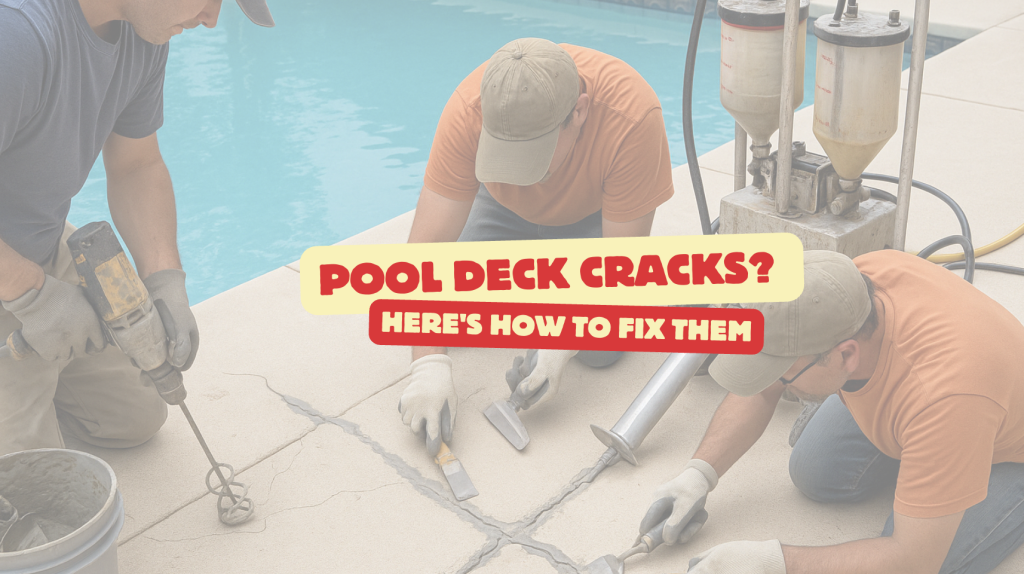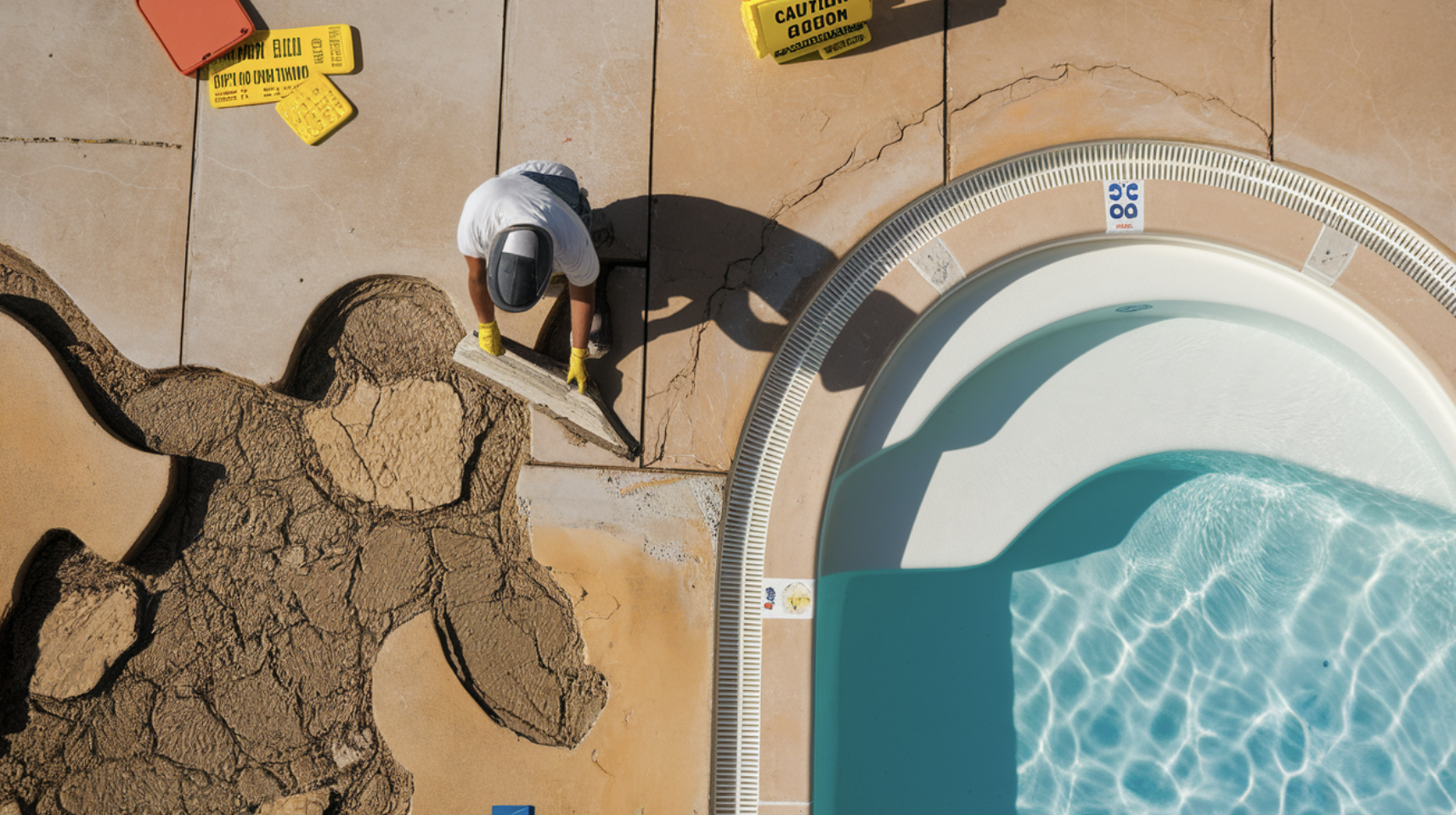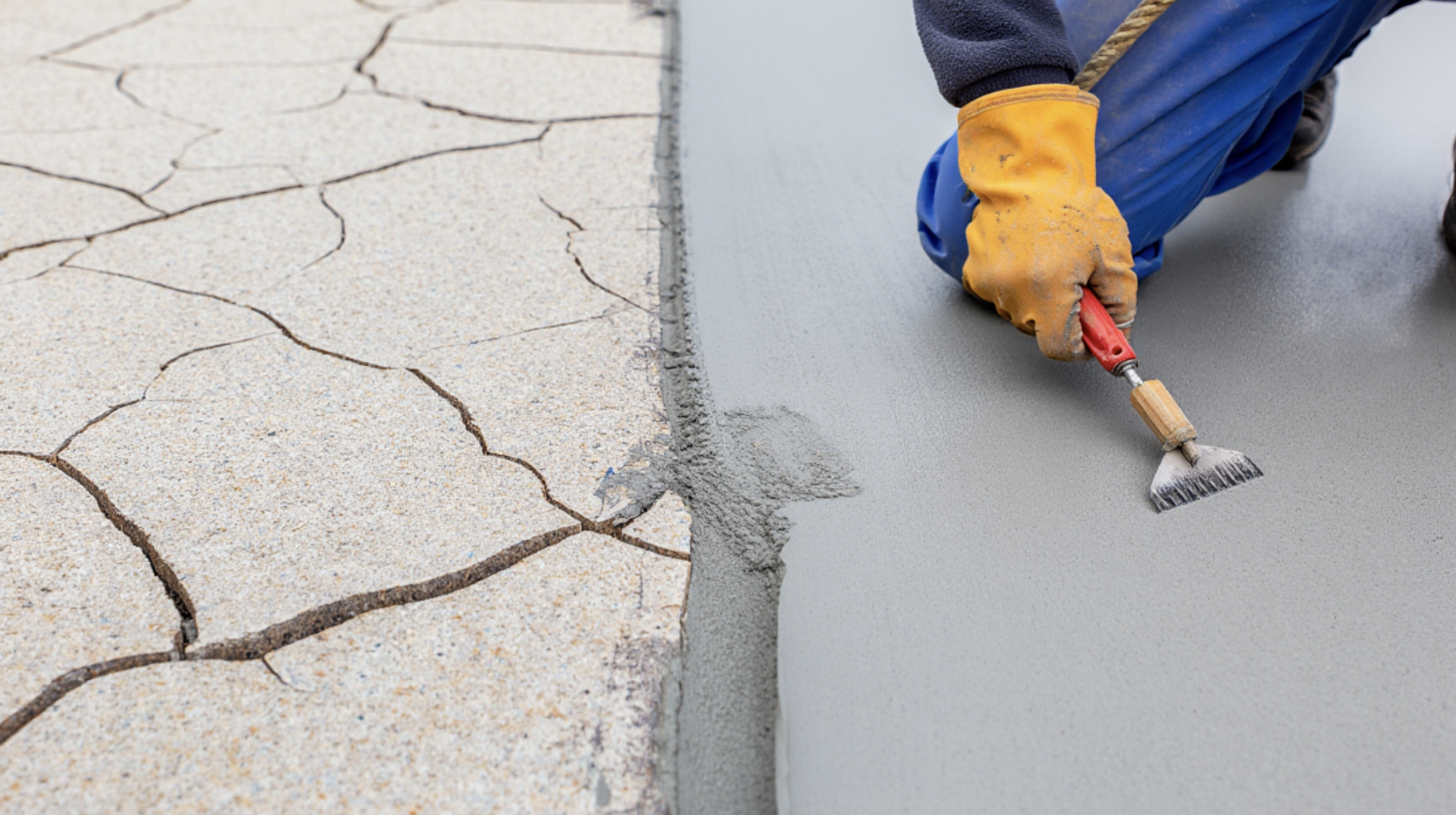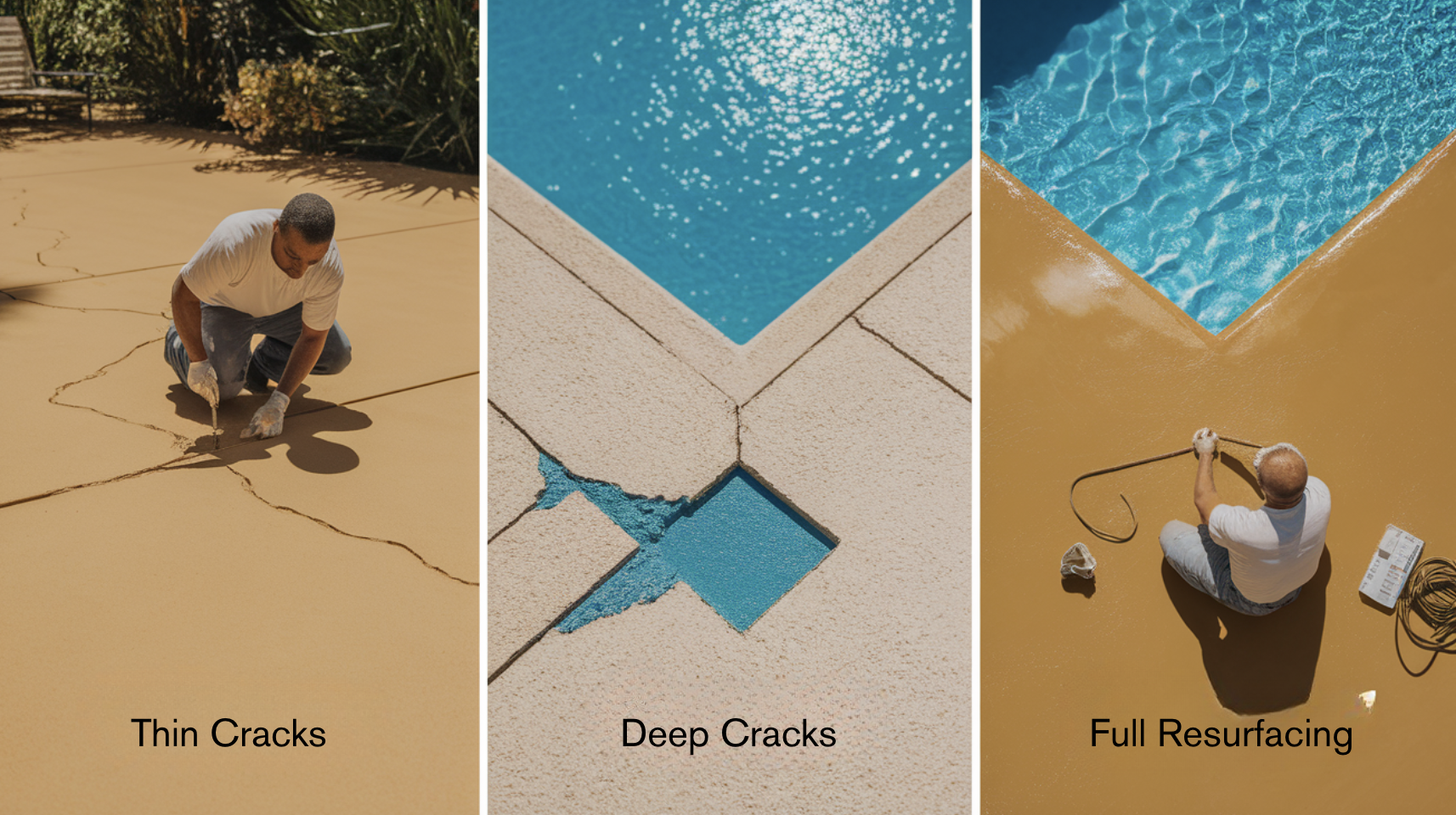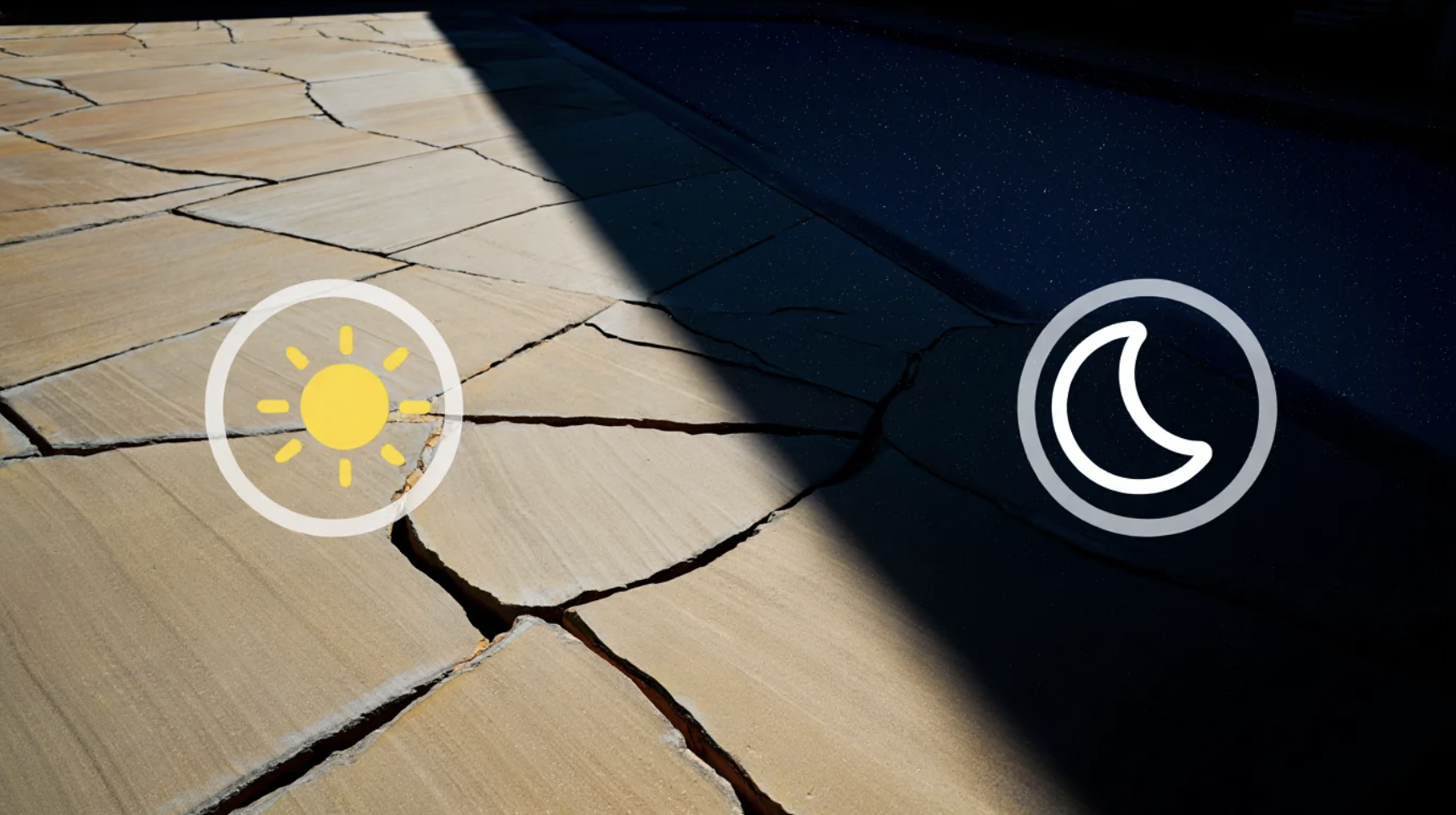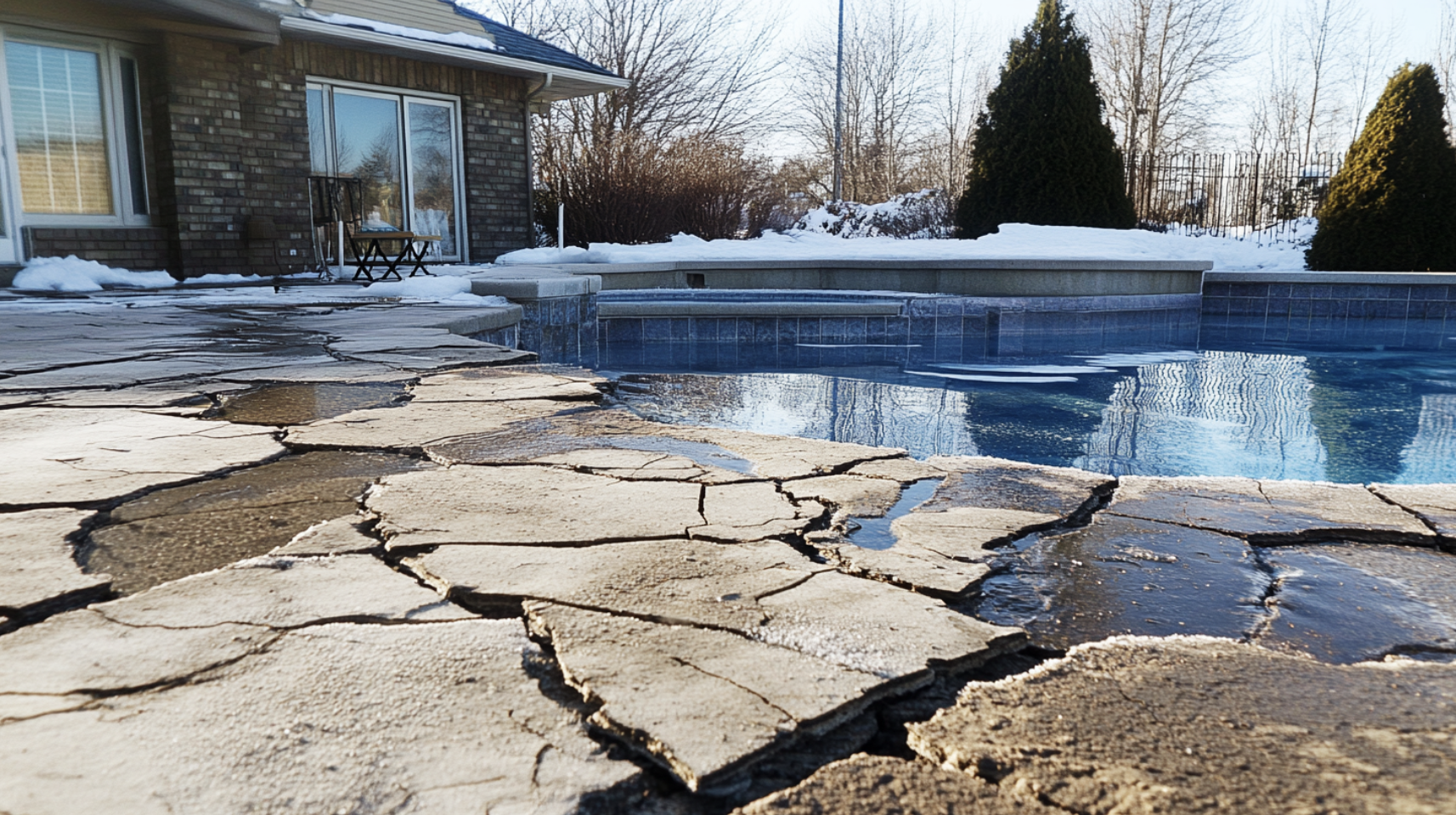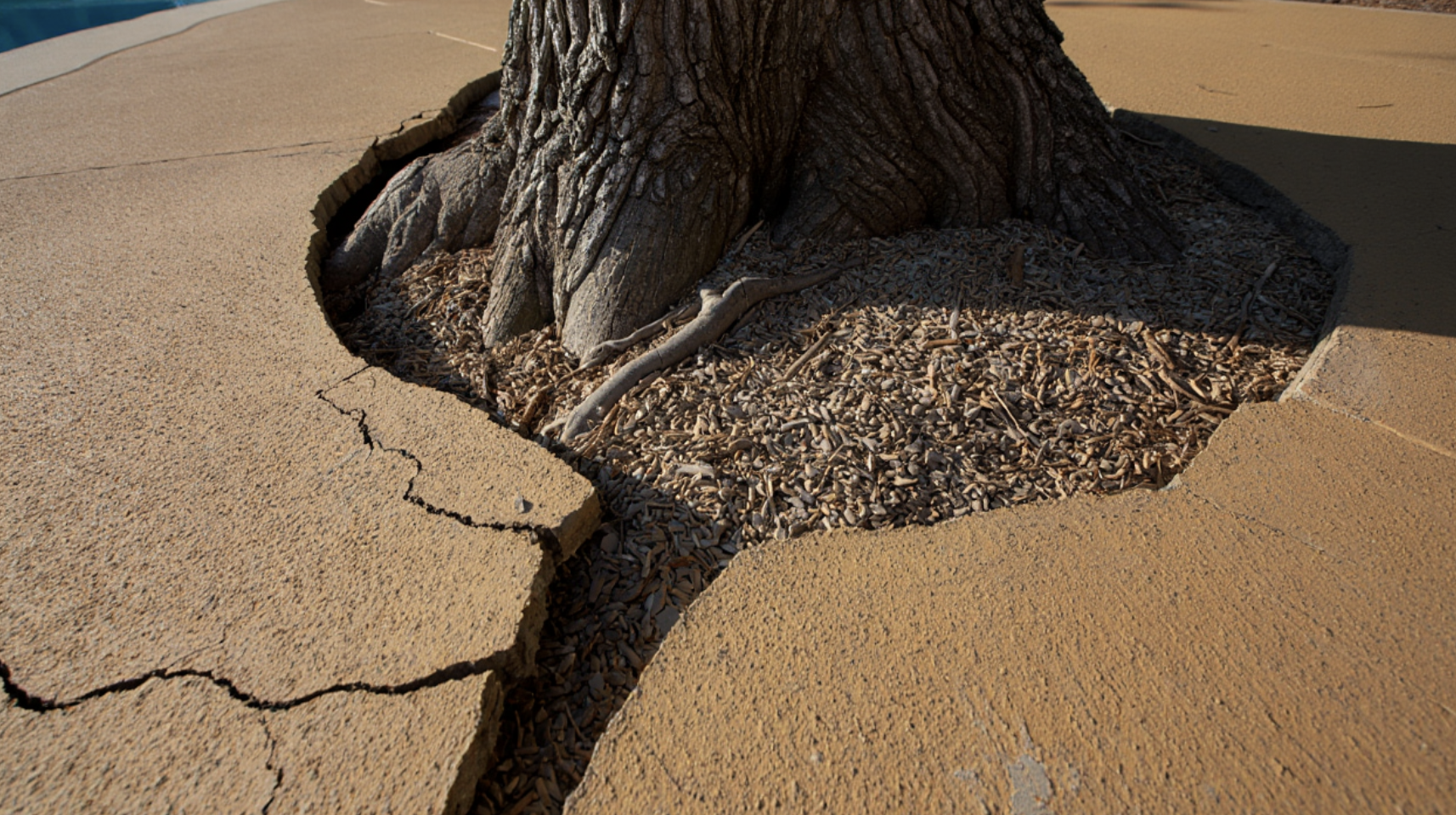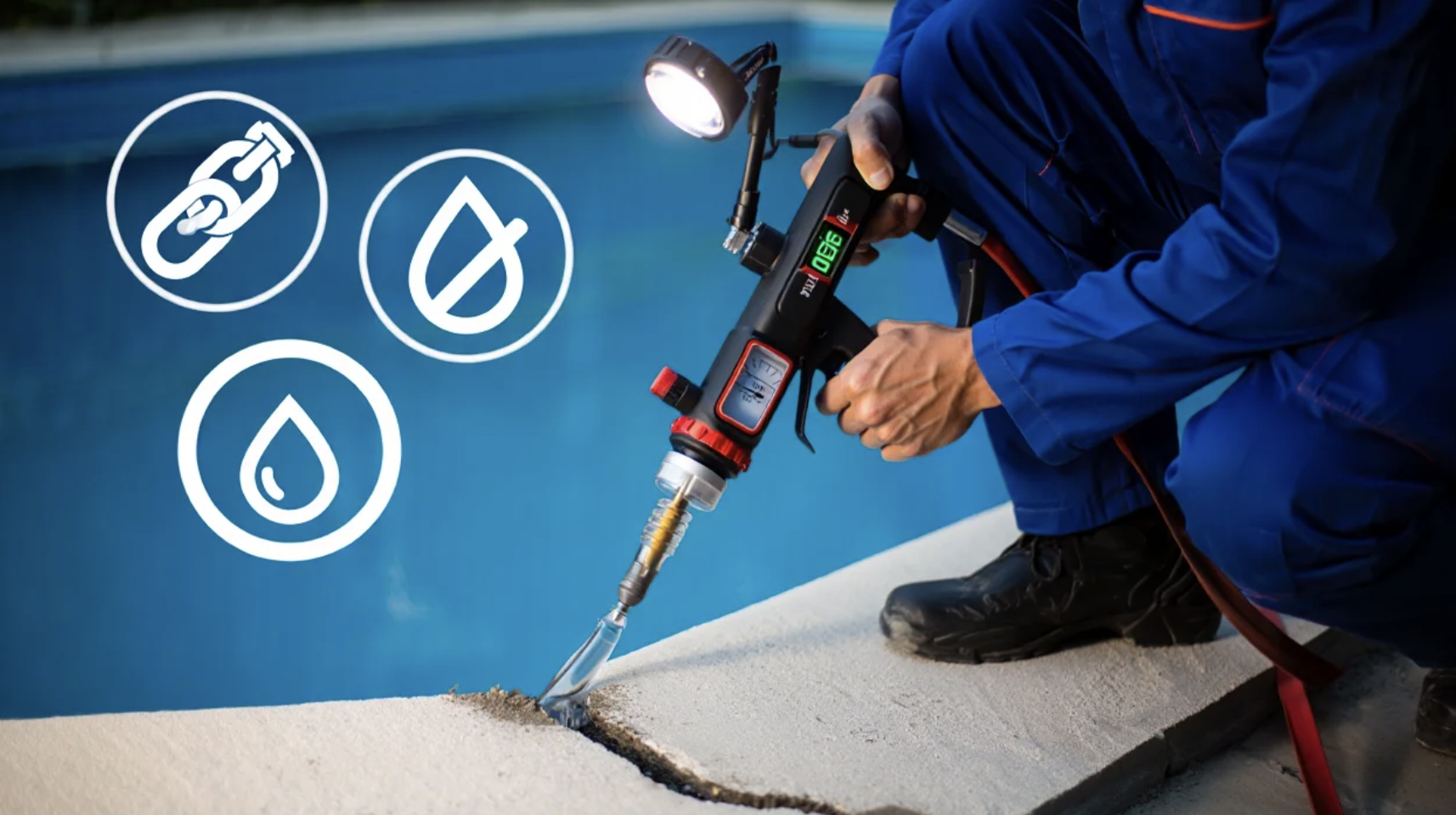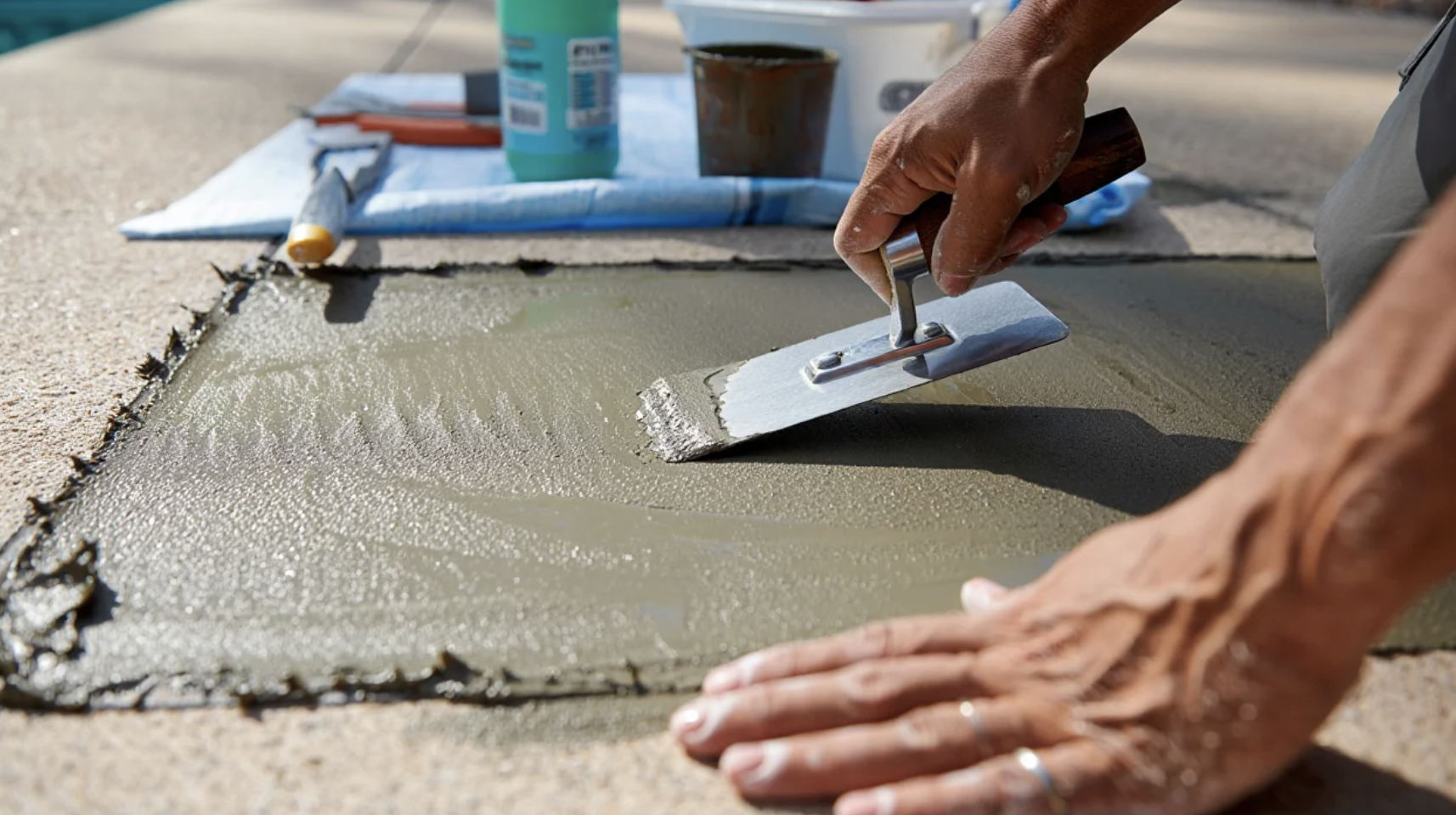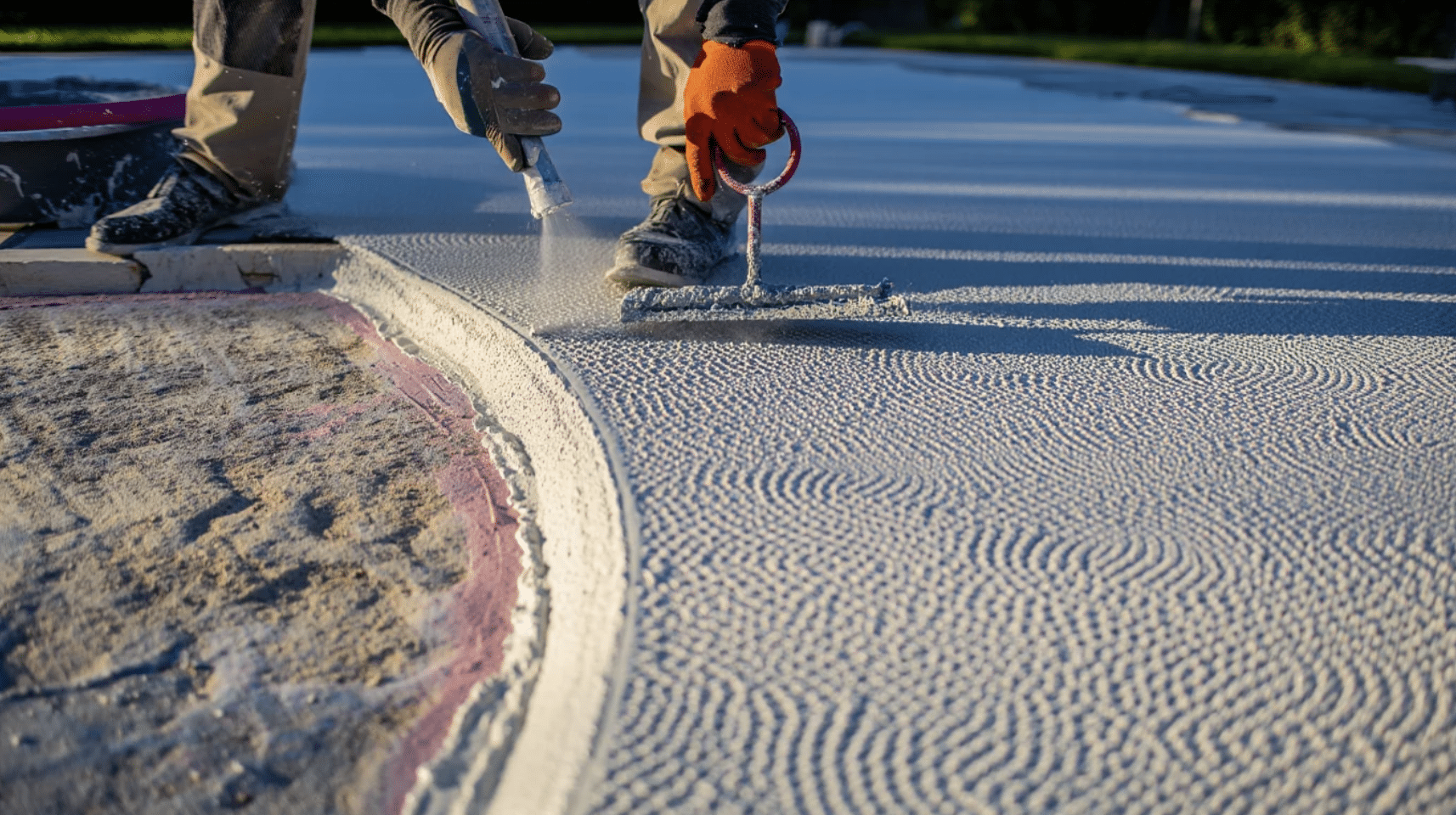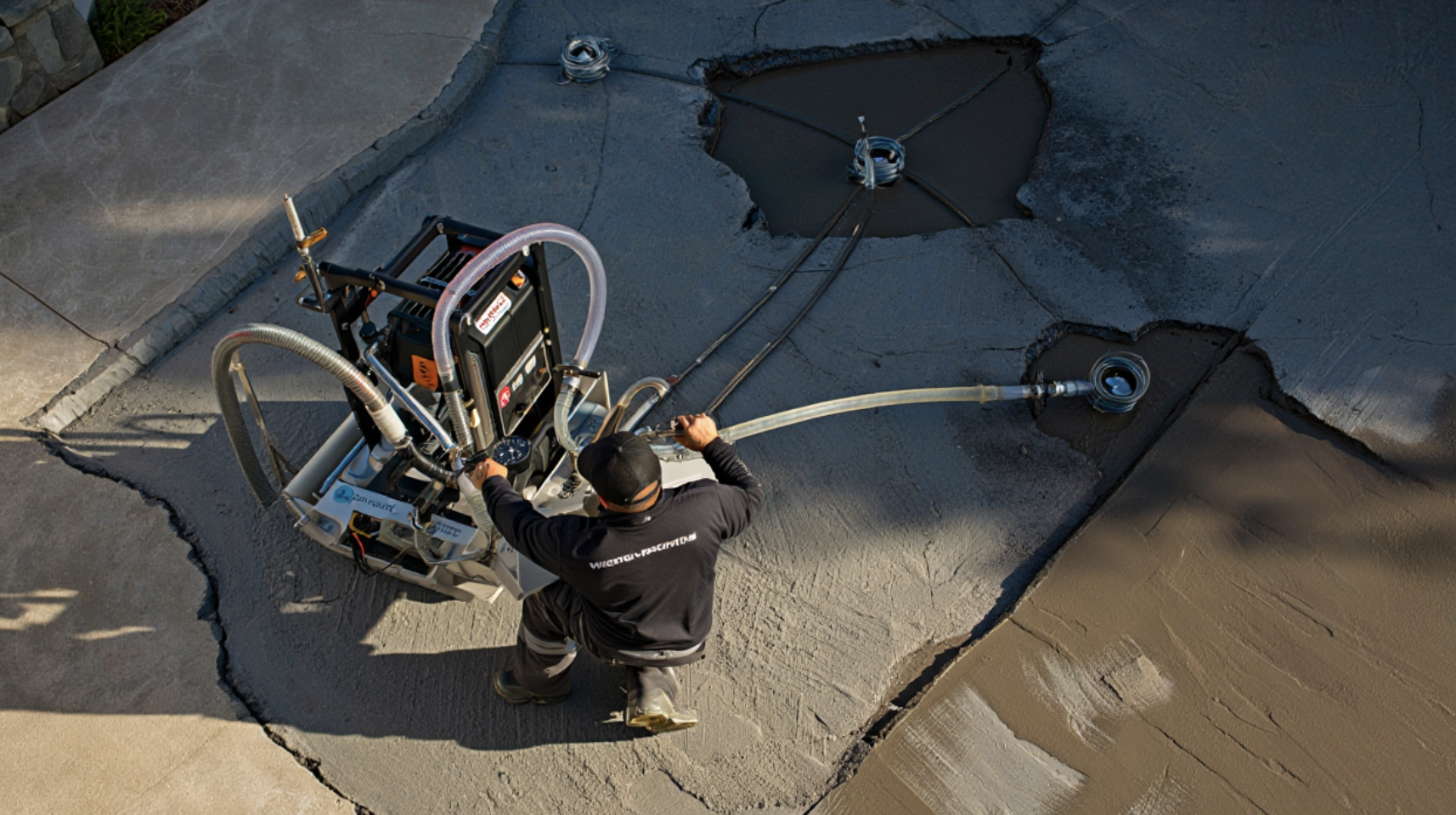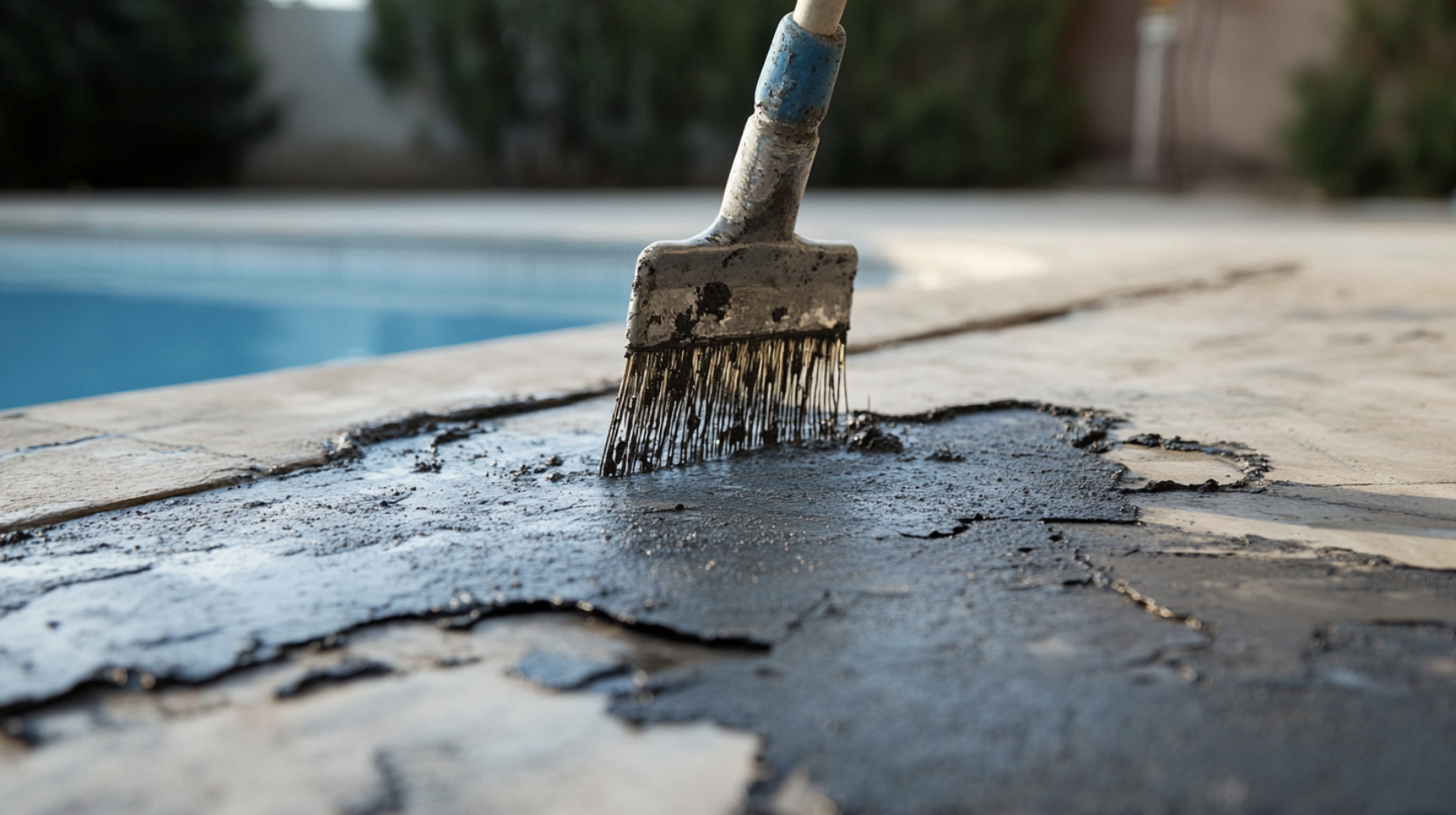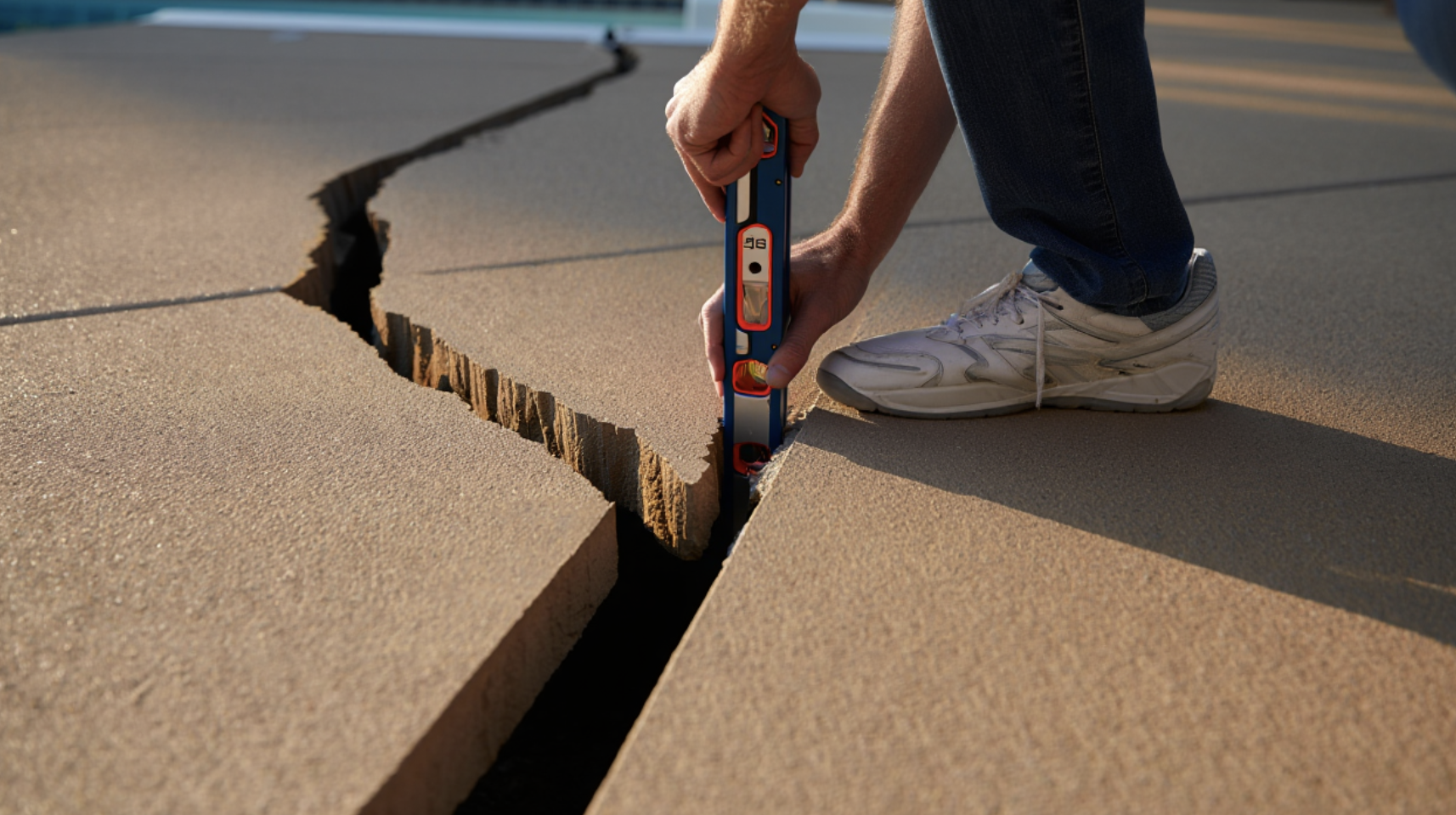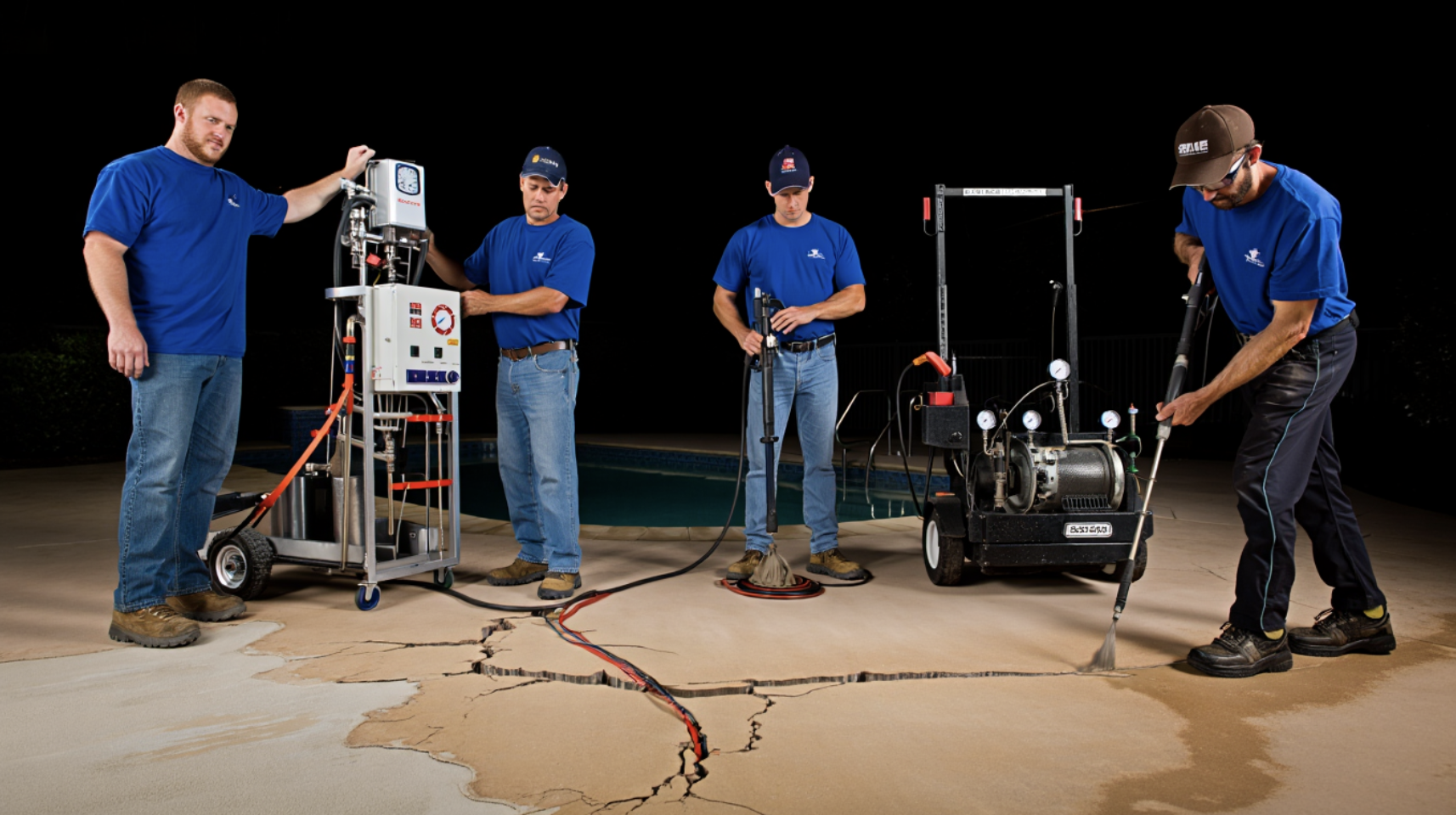Cracks in your pool deck aren’t just eyesores—they’re ticking time bombs for your wallet and family safety. Left alone, these small fissures grow into major hazards that invite accidents, water damage, and costly overhauls.
The good news? Fixing these problems doesn’t have to break the bank or require a construction degree.
From simple DIY fixes to professional solutions, the right approach can extend the life of your pool deck by years while keeping your outdoor oasis safe for everyone. Ready to stop those cracks in their tracks?
Let’s explore practical, proven methods that safeguard your investment and restore your peace of mind. Your perfect poolside summer starts with a solid foundation underfoot.
Why Pool Deck Crack Repair is Essential?
Your pool area should be a place for fun and relaxation, not worry and risk. Small cracks might seem minor at first, but they can quickly turn into major headaches that hurt your wallet and pose safety risks for family and guests.
Those tiny lines on your pool deck tell an important story – they’re early warning signs that shouldn’t be ignored.
When water seeps into these small openings, problems multiply rapidly, especially during freeze-thaw cycles that widen the cracks with each passing season.
Safety First: Preventing Accidents
The well-being of everyone who uses your pool area is your top priority:
- Cracks create tripping hazards that can lead to falls
- Sharp edges from broken concrete can cause cuts and injuries
- Water seeping into cracks makes surfaces slippery when wet
- Uneven surfaces are particularly dangerous for children and older adults
Addressing these issues promptly helps keep your outdoor space safe for everyone to enjoy.
Protecting Your Investment
Your pool is a valuable part of your home that deserves proper care:
- Small cracks will grow larger when left alone
- Water damage spreads beneath the surface, causing hidden problems
- Fixing small issues now costs much less than major repairs later
- Well-maintained pool decks boost property value and curb appeal
Think of crack repair as preventive medicine for your pool area – a small effort now prevents big problems later.
How to Repair Pool Deck Cracks?
Fixing pool deck cracks doesn’t have to be complicated. The right approach depends on the crack size, depth, and the cause of the crack in the first place.
With the proper tools and materials, many homeowners can handle smaller repairs themselves and save money in the process.
For more significant problems, professionals bring specialized equipment and skills that ensure long-lasting results and proper structural repair.
Quick Fix Options for Different Crack Types
Pool deck repairs fall into a few main categories based on damage severity. For thin, shallow cracks less than 1/4 inch wide, simple crack filling is sufficient. When dealing with deeper cracks or small broken areas, patching becomes necessary.
In cases of multiple cracks or widespread damage, full resurfacing provides your pool deck with a complete makeover. Your choice ultimately depends on how bad the damage is and how much of the deck needs work.
Materials You’ll Need
The right products make all the difference in creating lasting repairs:
| REPAIR TYPE | BEST MATERIALS | WHY IT WORKS |
|---|---|---|
| Small cracks | Concrete caulk or silicone sealant | Stays flexible, keeps water out |
| Medium cracks | Vinyl concrete patch mix | Good for cracks up to 1/2 inch wide |
| Large cracks | Two-part epoxy systems | Maximum strength and bonding |
Not sure which product to choose? Store workers at home centers can guide you toward the right solution for your specific problem.
Common Causes of Pool Deck Cracks
Understanding why cracks form helps you fix them properly and prevent them from recurring. Let’s examine the primary causes of most pool deck issues.
1. Thermal Expansion
Concrete isn’t as rigid as it seems. Throughout the day, the hot sun causes concrete to expand slightly, while cool nights cause it to shrink back. This constant movement creates stress that concrete wasn’t built to handle.
Without proper joints to absorb this movement, stress builds up until something gives way. The result? Straight line cracks that form patterns across large sections of your pool deck.
2. Freeze-Thaw Damage
Water becomes concrete’s worst enemy during cold weather. The problem begins innocently enough when water seeps into the tiny cracks and pores in your pool deck’s surface.
When temperatures drop below freezing, that trapped water turns to ice and expands with surprising force. This pushing action breaks concrete apart from the inside, creating new cracks and widening existing ones.
As spring arrives, you’ll notice flaking surfaces, loose chunks, and wider cracks than before winter began.
3. Poor Construction and Ground Settlement
Some problems arise from the outset due to construction shortcuts. Concrete that’s too thin can’t handle normal weight and traffic. Missing control joints leave no room for natural movement.
The ground beneath your pool deck plays a crucial role, too. Weak soil provides uneven support, leading to stress points. Tree roots can push upward as they grow, creating lifting forces that concrete wasn’t designed to resist.
Look for these signs: cracks forming near edges, corners that sink, or sections that tilt toward or away from the pool. The most successful fixes match the solution to the specific cause of your problem.
Pool Deck Crack Repair Methods
Choosing the right repair method is key to fixing your pool deck properly the first time. Here’s a look at your main options, from simple to more involved.
1. Crack Injection
For cracks that run deep but aren’t too wide, injection provides a strong fix that reaches places other methods can’t.
The process works by forcing repair material into the crack under pressure. This pushes the repair compound deep into the concrete, creating a strong bond from within.
For hairline cracks, polyurethane works well because it stays somewhat flexible and can handle small movements. For structural cracks where strength matters more, epoxy provides a rigid, nearly unbreakable bond.
This method works best for:
- Cracks less than 1/4 inch wide
- Deep cracks that go through the concrete
- Areas where water leakage is a problem
Many professionals consider this the gold standard for structural crack repair because it restores the concrete’s strength, not just its appearance.
2. Patching
When concrete has broken away or formed holes, patching fills in the missing material and restores the surface.
First, clean out any loose material and clear the area. Then apply a bonding agent to help the new material stick to the old.
Mix the patching compound according to instructions, apply it to the damaged area, and smooth it to match the surrounding surface.
For best results:
- Choose a patch product made specifically for pool decks
- Follow the mixing instructions exactly
- Match the texture of the surrounding concrete
- Allow proper curing time (usually 24-48 hours minimum)
Taking the time for thorough preparation often makes the difference between a patch that lasts for years and one that cracks again within months.
3. Overlay/Resurfacing
When damage is widespread but the base is still solid, applying a new surface layer can be the most cost-effective solution.
Resurfacing involves applying a thin layer of special concrete mix over the entire deck. This creates a fresh, smooth surface while covering multiple cracks and damage spots in one go.
Modern overlay products come in a variety of textures and colors, allowing you to enhance the look of your pool area while addressing its issues.
The basic process involves:
- Cleaning the entire surface thoroughly
- Repairing any major cracks or low spots
- Applying a bonding agent
- Spreading the overlay material
- Finishing with the desired texture
- Sealing after proper curing
Beyond just fixing cracks, this approach provides an opportunity to update the entire look of your pool area, potentially increasing your home’s value while also improving safety.
4. Slabjacking
When sections of your pool deck have sunk or become uneven, slabjacking can raise them back to proper height without replacing the concrete.
This method involves drilling small holes through the sunken concrete, then pumping a grout mixture underneath. As the void fills, the concrete lifts back into place.
The process is fascinating to watch, as concrete slabs that haven’t been level for years can be adjusted with millimeter precision. Unlike complete replacement, most slabjacking repairs allow you to use your pool deck again within 24 hours.
DIY Pool Deck Crack Repair: When and How to Do It
Taking on pool deck repairs yourself can save money and give a sense of accomplishment. Here’s when and how to handle things on your own.
Simple DIY Solutions
For minor repairs, you’ll need a few basic tools:
- Wire brush for cleaning cracks
- Garden hose or pressure washer
- Putty knife or trowel
- Appropriate crack filler product
- Concrete sealer
The basic process for fixing small cracks follows these steps:
- Clean the crack thoroughly, removing all loose material, dirt, and moss.
- Wash out the crack with water and let it dry completely. This may take 24 hours or more, depending on the weather conditions.
- Apply crack filler according to product instructions. For optimal results, use a product specifically designed for concrete pool decks that can withstand water exposure.
- Smooth the surface and remove excess material before it dries.
- Allow proper curing time as stated on the product label.
- Apply a quality concrete sealer over the repaired area to protect it from water damage.
For best results, work on a dry day with temperatures between 50°F and 85°F. Too hot or too cold can affect how well the repair material sets up.
Limitations of DIY
While many small repairs are well within reach of a handy homeowner, some situations call for professional help:
- Major structural cracks that form distinct patterns may indicate underlying problems that require expert assessment. These often resemble stair-step cracks or those that run in parallel across large sections.
- Cracks wider than 1/2 inch or that exhibit movement (they expand or contract depending on temperature) typically require more than a simple fill-and-forget approach.
- Concrete that rocks or moves when you step on it signals problems with the base underneath. Fixing the surface without addressing this will lead to more cracks soon after.
When in doubt, consult a professional to examine the problem. Even if you end up doing the work yourself, their advice can help you choose the right approach.
Professional Pool Deck Crack Repair
Sometimes calling in the pros makes the most sense, especially for complex or extensive damage.
Expertise and Equipment
Professional repair crews bring specialized knowledge that helps them spot issues you might miss. They can distinguish between a surface crack and one that indicates deeper issues.
Their industrial-grade equipment makes short work of jobs that would take a homeowner days to complete:
- Commercial pressure washers clean deeper
- Professional-grade bonding agents create stronger repairs
- Power mixers ensure perfect material consistency
- Specialized tools apply materials more evenly
The efficiency of professional crews means your pool can be back in service much sooner.
What might take a homeowner multiple weekends can often be completed by professionals in a single day, with better results that last longer.
Common Professional Methods
Professionals have access to repair techniques not typically available to homeowners:
- Epoxy injection utilizes specialized equipment to inject epoxy deep into cracks under pressure. This creates a waterproof seal that’s actually stronger than the original concrete.
- Crack stitching involves installing metal or carbon fiber “staples” across larger cracks to prevent them from moving apart further. The stitches get covered with patching material for a smooth finish.
- Mudjacking (similar to slabjacking) lifts sunken concrete sections by pumping material underneath them. This fixes uneven areas without the mess and expense of tearing out and replacing concrete.
These specialized techniques often require a higher upfront cost but provide more long-lasting solutions that can ultimately save money over time.
The Bottom Line
Pool deck cracks don’t need to spell disaster for your backyard paradise. With the right approach—regular checks, prompt repairs, and effective prevention—you can maintain a safe and beautiful pool area for years to come.
Remember that addressing small issues today prevents major headaches tomorrow. Protect your investment by sealing regularly, maintaining proper drainage, and teaching everyone proper deck care.
For minor cracks, DIY solutions often work perfectly, while professional help gives peace of mind for larger problems. Your pool should be a source of relaxation and fun, not worry and risk.
Take action now, and you’ll enjoy many more seasons of poolside memories on a sturdy, crack-free deck.
If you’re interested in learning more about maintaining a pool, click here for additional information.

